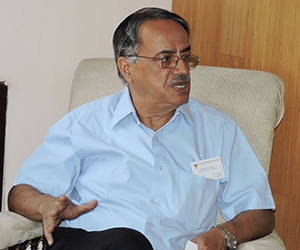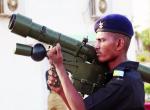The defence budget for 2013-2014 was passed in the Parliament without as much as a whisker of debate. The Parliament’s Standing Committee on Defence (SCD) as a statutory requirement did go through the demands for grants by the MOD but their recommendations and observations are generally given a go by and in many cases are totally overlooked. The SCD has regularly pointed out the infirmities in implementing our defence planning process, lack of adequate allotment of funds for the defence services and problems in our defence procurement mechanisms and procedures.
The Tenth (2002-2007) and Eleventh Five Year Defence Plans (2007-2012) lapsed without getting the approval of the government and this too after defence reforms were introduced and HQ IDS was formed to address many of the issues concerned with defence planning and budgeting processes. Pity is that while HQ IDS had worked out these two plans in time they could not be finalized by the government in the entire tenure of their plan periods. This only shows that the government is not seized with urgency of shoring our defence capabilities. The SCD also has ‘consistently been raising serious concern over non-finalisation of long-term plans which have resulted into adhocism in the planning processes’. As a matter of fact the Twelfth FYDP (2012-2017) has already commenced without being approved by the government. This exercise should have finished at least a year before the commencement of the plan.
Last year when the former Army Chief pointed out the critical gaps in defence capabilities, the Defence Acquisition Committee (DAC) headed by the Defence Minister quickly gave his assent to the 12th FYPD and also finalized 15 year Long Term Integrated Perspective Plan (LTIPP) 2012-2027. But after that a year has lapsed without getting the required approvals from Ministry of Finance and the Cabinet Committee on Security for its 12th five year plan and LTIPP. The current plan aims at improving armed forces combat effectiveness against China and Pakistan, upgrade military infrastructure along the "northern borders", ensure third-generation night-fighting capabilities, induct attack helicopters and overcome the slippages or the critical hollowness in arms and ammunition besides inducting additional platforms and connected defence systems for Indian Air Force and Navy.
Further, the Defence Minister and MOD had gone on record to state that a National Security Strategy(NSS) document would be made from which would flow out Defence Planning Guidance (DPG) and thereafter a National Military Strategy (NMS) would be formulated that would be reflected in our defence plans. In fact a draft NSS had been circulated amongst the various ministries and stakeholders but thereafter it has not seen light of the day. The SCD of 14th Lok Sabha had deliberated on the issue of NSS and was looking forward to its formulation but now the current SCD of 15th Lok Sabha has completely forgotten about it.
Last year a proposal for raising a Mountain Strike Corps in the North East by the Army was sent back (after one year of consideration at the MOD/government level) for reappraisal by the COSC so that requirements of other services can also be taken into account. The COSC has given its recommendation for raising of the Corps but the requisite approvals from the Cabinet Committee on Security are still awaited. The problems are further compounded by the fact that there is no common view on NSS and threat perceptions amongst the services in the absence of an articulated NSS, DPG and NMS.
Resource allocation for the defence services is an area where same problems have continued to persist without being addressed in a meaningful manner. Firstly, the funds allotted are always much less than the projections; secondly, there is the question of surrender of funds and thirdly the ever present requirement of improving capital to revenue ratios of the defence budget.
The table given below depicts the projections for funds made by respective services for the current year and last year and the allotments made. It is very rare that the services have been allotted funds as projected. Therefore, the SCD has been oft repeating its recommendation that ‘keeping in view the increasing trend of military expenditure of neighbouring countries, India should also expand the size of allocations made to Defence Budget so that Indian forces are fully equipped with modern weaponry’.
(Budget estimates in Crores of Rupees)
| Service | BE 2012-13 | BE 2013-14 | ||
| Projected | Allotted | Projected | Allotted | |
| Army | 112096.22 | 96564.83 | 118883.46 | 99003.03 |
| Navy | 44478.90 | 37314.44 | 52940.22 | 36343.46 |
| Air Force | 56838.25 | 48220.26 | 90530.48 | 57503.94 |
Looking at above figures it is evident that that allotment of funds to Army is short by about Rs. 19880, Navy is short by Rs. 16596 crore and Air Force is short by Rs. 33026 crore in Budget Estimate of 2013-14. The services also did not fare well in this regard last year; and last five years data of budget for capital acquisitions also reveals that the allotment of funds to services have been much less than projected. Further, last year there has been under spending of Rs. 16040 crore under the capital head which only indicates that not enough momentum is being imparted to the modernisation drive of our armed forces.
In addition there has been consistent lower allocation as percentage of GDP over the years. For instance, in 2009-2010 it was 2.19 percent, 2010-11 it was lower at 1.98, 2011-12 it was 1.90, it declined to 1.78 last year and it stands at 1.79 in the current year. Our neighbours like China and Pakistan spend 2.1percent and 3 percent of the GDP on defence; the US spends even more at 4% of GDP.
Another feature of the capital budget of 2012-13 and 2013-14 has been that the committed liabilities consume a large portion of the budget thus leaving very little for new schemes. The most affected are the technology intensive services like the Air Force and Navy but the Army is also not far behind. For instance, in 2013-14 the capital budget for new schemes for the Air Force is meagre Rs. 2010 crores, for Navy 443 crores and for Army is 494 crore whereas the committed liabilities for the three services are to the tune of Rs 64,680 crore.
Though the revenue to capital budget ratios have improved over the years to an average of 60: 40, the SCD feels that ‘Ministry has not shown any commitment to increase the capital ratio in comparison to revenue ratio for the forces’ as the ratio should at least be improved to 55:45. This ratio seems to have been achieved earlier in the defence budget of 2008-09. However, this ratio needs to be stepped up to 50:50 with increased outlays for the budget so that modernisation of forces could proceed at a faster pace.
Our defence procurement system has been modified and improved many times without resulting into any appreciable improvements on the ground. Our procurement system, organisations, procedures and mechanisms have not been able to fast track the acquisitions which the armed forces need to narrow the capability gap which exists with our potential adversaries. Last year Comptroller and Auditor General castigated the entire arms procurement process and cited several incidents of inordinate delays. There have been unacceptable delays in obtaining critical air defence equipment and spares for damaged Israeli aerostat radars; the weapon packages for MIG-29Ks meant for our aircraft carrier were not finalised as a result they were delivered without weapon systems and because of poor monitoring and inadequate attention to contracts clauses additional problems arose in acquisition of Low-Level Transportable Radars.
Financial powers of the Defence Minister, Defence Secretary and Services HQs were enhanced last year to process capital procurement cases for filling in some of the critical deficiencies. Defence Minister was empowered to process procurement cases of upto Rs. 500 crore; Service HQ level have been delegated with financial powers to process procurement cases upto Rs.50 crore, Capital Cases above Rs.50 crore and upto Rs.75 crore are approved by Defence Secretary. There was a proposal also to increase the amount. Finance Minister could process upto Rs1000 crore and beyond that was the domain of Cabinet Committee on Security. Results so far indicate that there has not been much impact of the enhancement of financial powers as procurement woes for several reasons continue to persist.
In one of the controversial recommendations by the Naresh Chandra Committee it was proposed that the practice of blacklisting firms of suppliers should be discontinued. It has also suggested that the Prevention of Corruption Act be modified to give a certain degree of protection to officers dealing in defence purchases as there are possibilities of making 'an error of judgment'. This flies in the face of the procurement procedures which are based on the principles of probity, integrity and transparency and so on. Without doubt there is a need to streamline the procedures but including the above provisions would only add to more flaws and possibilities of wrong doing in the defence purchases.
Without doubt we need to rectify the situation where we import 70 percent of our military hardware needs. These include a greater role in indigenous production of the private sector. The Defence Research and Development Organisation should work in closer cooperation with the armed forces than is the case at present. The DRDO also needs to be allotted about 10 percent of the defence budget to spur research and innovation.
A Technology Perspective Capability Roadmap (TPCR) has been prepared based on the LTIPP so that DRDO, Defence Public Sector Undertakings and the Indian industry could plan their research and development roadmap accordingly. A new Defence Production Policy has also been posted on the MOD’s website in order to give encouragement to indigenisation of defence industry. This policy is based on the Defence Procurement Procedure of 2011 which has been again modified. It is too early to tell whether the new policy would be instrumental in addressing the woes of our procurement and indigenization.
All these steps would take some time to mature, meanwhile our military preparedness continues to suffer; no wonder that our difficult neghbours like China and Pakistan have been flexing their muscles without an appropriate response from our side. Ladakh incident is a wake up call and if we do not get our act together we would be staring at a repetition of 1962 debacle which could be worse than the previous one because this time Pakistan would be too glad to join in against India.
Published Date: 7th May 2013







.jpg)


Post new comment